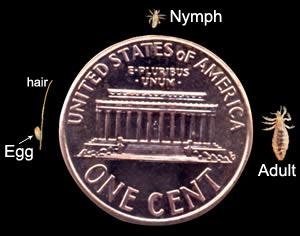Head Lice

Lice are much smaller than a penny.
Head lice are tiny parasites that can infest the head and neck area and attach their eggs to the base of the hair shaft. Head lice do not cause disease, but they can itch. Children scratching their scalps can open the skin and cause bacterial infection.
The California Department of Public Health has an excellent website with information about head lice. There you can find the most up-to-date information about checking for and treating lice, as well as CDPH's recommendations for lice control in various school and congregate living settings.
Page last reviewed: November 8, 2024
